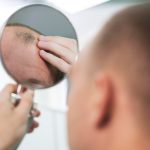
3 Nonsurgical Treatments for Hair Loss
If you’re tired of trying to cover up or hide your hair loss with hats or creative parts and hairstyles, you aren’t alone.
Thinning hair can destroy your self-confidence and make it difficult to feel good about yourself at work, home, or in social settings. Though surgical treatments can help, they aren’t your only option.
Our team offers different nonsurgical therapies to address hair loss and restore your self-esteem. Your treatment starts with a comprehensive hair loss consultation at which the team determine which nonsurgical treatment will best help your hair loss.
To get started with a fuller head of hair in the new year, schedule an appointment at Honest Hair Restoration today. In the meantime, here’s a closer look at our three favorite nonsurgical hair loss therapies.
1. Custom-blended medications
After reviewing your unique hair loss, Dr. Maag may recommend custom-blended, prescription and prescription-strength medications. Some medications are topical, while others may be delivered orally, and they may either slow hair loss to help you retain more hair or help promote hair regrowth.
Medications are available for both men and women. Some block an enzyme that affects hormone conversion related to hair loss, while others slow the production of androgen hormones. Dr. Maag reviews each medication with you, taking time to answer any questions or concerns you have.
Medications generally take three to six months to produce noticeable effects since they work within your natural hair cycle. Side effects are rare, but possible, and depend on which medication you take. For example, topical medications may trigger scalp irritation, while oral medication might affect libido.
2. Low-level laser therapy
For some patients, we recommend low-level laser therapy (LLLT), a safe, nonsurgical treatment for hair loss that uses near-infrared energy. It works by improving blood flow to your scalp and stimulating weak follicles to trigger growth.
The range of wavelengths of light used during treatment promotes cellular regeneration and growth in a process called photobiomodulation. There are few negative side effects, making LLLT a safe therapy for good candidates.
Recent research shows LLLT to be an effective, low-risk therapy for regrowing hair in both men and women. Many patients with the best results combine LLLT with hair-loss medications, which can enhance hair regrowth.
3. Platelet-rich plasma (PRP) therapy
Platelet-rich plasma (PRP) therapy uses platelets from your blood to boost new cell production, stimulate healing, and increase follicular activity. This means you start to grow new hair gradually over the course of your hair cycle, giving you a naturally fuller head of hair.
During your PRP therapy session, a team member draws a small amount of blood from your arm, then spins it in a centrifuge. This separates the platelets from the other contents of your blood.
Platelets contain growth factors, which stimulate new hair growth. It’s a safe treatment for most healthy adults and is especially effective in helping patients with genetic hair loss. Dr. Maag reviews your medical history before recommending PRP therapy since the treatment may not be ideal if you have certain medical conditions.
Learn more about nonsurgical hair restoration by scheduling a consultation online or over the phone.





